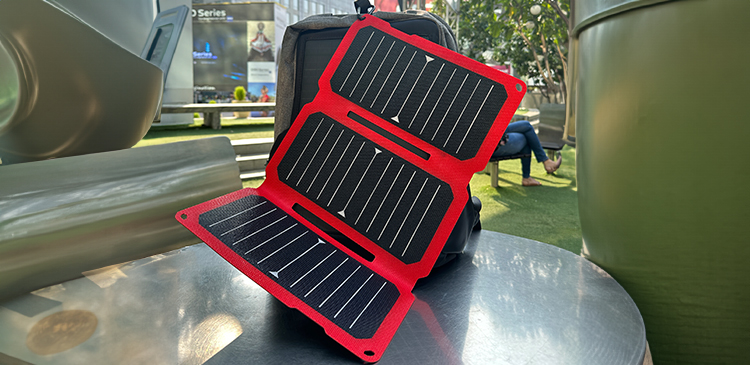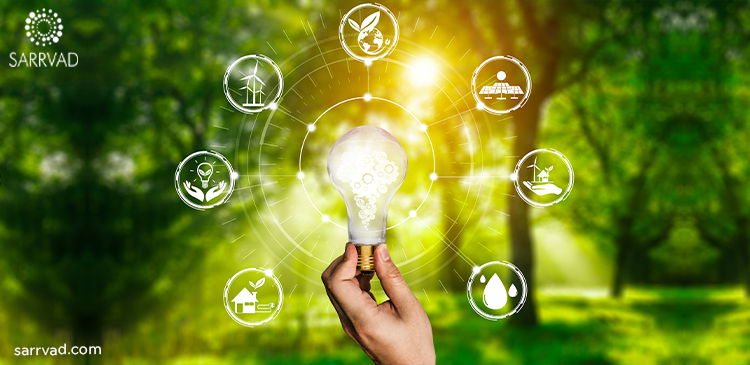
SARRVAD's Solar Travel Charger: The Compact S..
Jan 25 - 2024

17
Jun
Renewable power is booming, as innovation brings down costs and starts to deliver on the promise of a clean energy future. Nations across the globe have been making strides towards incorporating the use of renewables in day-to-day living and leaving a better planet for future generations. Solar and wind are the two most ranked renewable energy sources that have garnered much attention over the decades. this means that the renewables are increasingly displacing ‘dirty’ fossil fuels in the power sector, offering the benefit of lower emissions of carbon and other types of pollution. But not all sources of energy marketed as ‘renewable’ are beneficial to the environment. Biomass and large hydroelectric dams create difficult trade-offs when considering the impact on wildlife, climate change, and other issues. Consistent innovation in solar LED lights and solar lighting systems in Delhi have made solar a convenient option for the masses.
What is Renewable energy?
Referred to as clean energy, renewable energy comes from natural sources or processes that are constantly replenished-sunlight, wind, etc.
Types of Renewable energy sources are:
• Solar energy
• Wind energy
• Hydroelectric power
• Biomass energy
• Geothermal energy
• Tidal or wave energy
Renewable energy for home includes:
• Solar power
• Geothermal heat pumps
• Small wind systems
Advantages of Renewable energy resources:
• Consistent fuel supply that never runs out
Renewable energy is created from sources that naturally replenish themselves such as the sun, wind, and others. unlike the mining of coal, oil, or natural gas, renewables convert natural resources directly into electricity.
• Zero carbon emissions
As we race to decarbonize our world and embrace energy sources that do not contribute to global warming, renewables are helping to provide us with emission-free energy, heat, cars, and even air travel.
• Cleaner air and water
Burning fossil fuels to generate electricity does far more than warm the climate; it also contaminates the air we breathe and the water we drink. Whereas, renewable energy creates no pollution, waste, or contamination risks to air and water.
Cheaper form of electricity
The drastic decline in solar and wind costs has even led many fossil fuel multinationals to focus on renewable energy investment instead.
Job creation
With an increasing focus on global warming and many governments setting ambitious carbon-reduction goals, one of the surprising renewable energy advantages is that it has quickly become a major source of new job growth in the industry.
Disadvantages of Renewable energy resources:
Higher capital costs
While renewable energy systems need no fuel and can deliver substantial long-term savings, their up-front costs can still be prohibitive. On a larger scale, wind farms, solar parks, and hydropower stations require significant investment, land, and electrical infrastructure, resulting in some projects being delayed, altered, or even canceled.
Electricity production can be unreliable
Solar panels lose efficiency on cloudy days, wind turbines aren’t effective in calm weather, and hydropower systems need consistent snow and rainfall to maintain reliable production. at the same time, when renewable systems produce too much energy, they risk overloading the grid and causing major problems for network operators.
Energy storage is a challenge
Utility-scale batteries have gained significant momentum in recent years, despite the falling costs, storage technology is still relatively expensive. Due to the intermittent nature of renewables, they need forms of energy storage to capture and release electricity in a consistent and controlled way.
Impacted by environmental conditions
The efficiency of renewable energy systems depends on their location and surrounding environment. Solar panels generate some electricity even on cloudy days, they are most productive in locations with consistently bright and sunny climates.
Renewables still have a carbon footprint
Renewable energy components are typically made in large factories that consume high amounts of electricity, in addition to the diesel and gasoline vehicles needed for their transport and installation.
Renewable energy sources have their challenges, but there’s a huge upside:
1. Despite some existing limitations and challenges, it is clear that renewables will one day supply all of our homes, businesses, and vehicles with emission-free energy.
2. While it’s unlikely that a single energy source will ever meet our needs, the combination of all the above renewable energy sources has the potential to power our entire world without creating any pollutants or greenhouse gases.
3. You can request 100% green energy from your power company
4. Purchase renewable energy credits to offset your electricity use
5. If you have a large property, you can host a wind turbine or solar panels on your vacant land
6. You can invest in a community solar farm in your local area
Propagating renewables or using them in your home, can accelerate the transition toward a clean energy future. Even if you are not able to install solar panels yet, you may be able to opt for solar lighting systems in Gurgaon. Collaborating with the best solar EPC company in Gurgaon makes the process of solar installation an easy way.